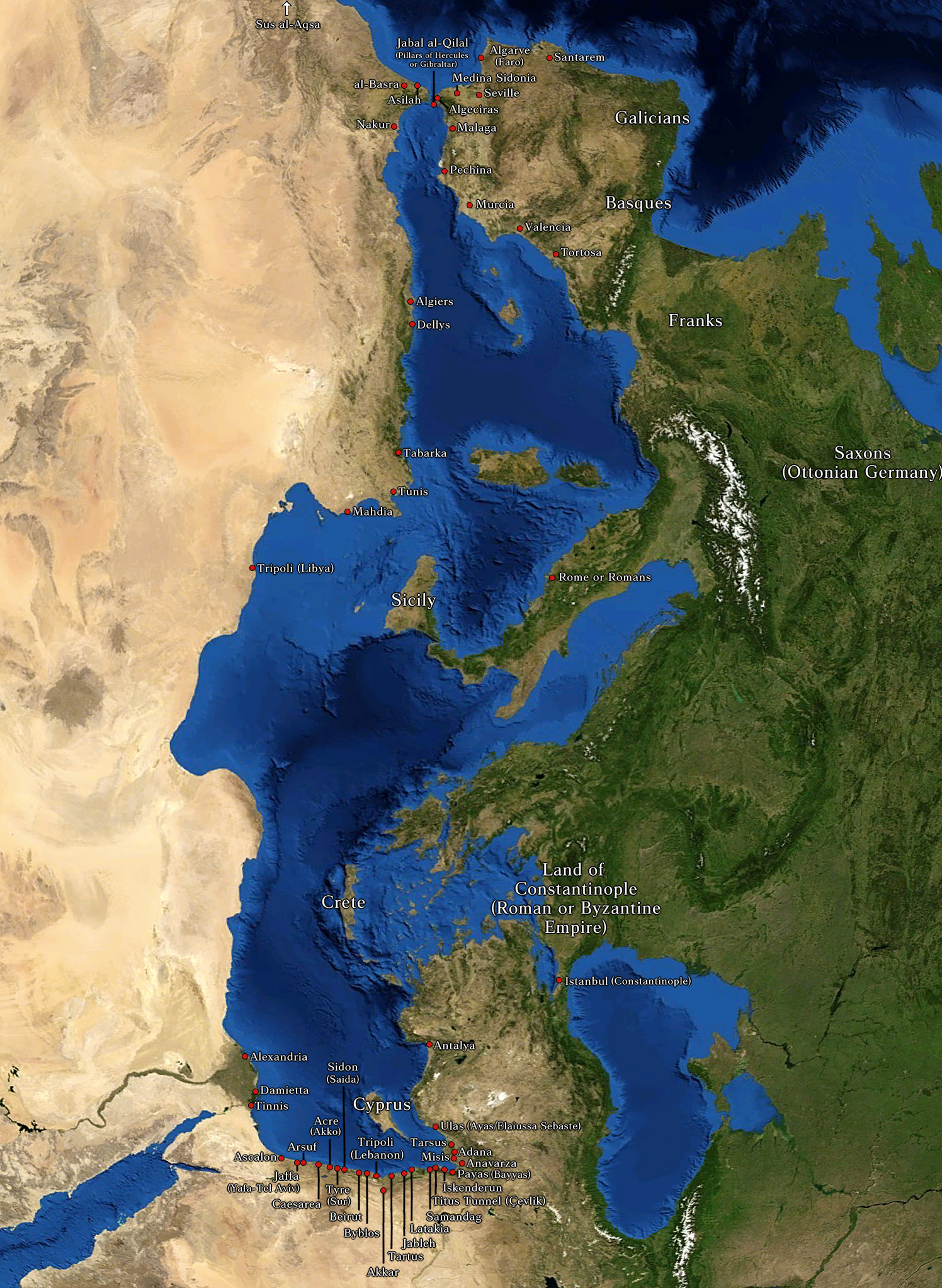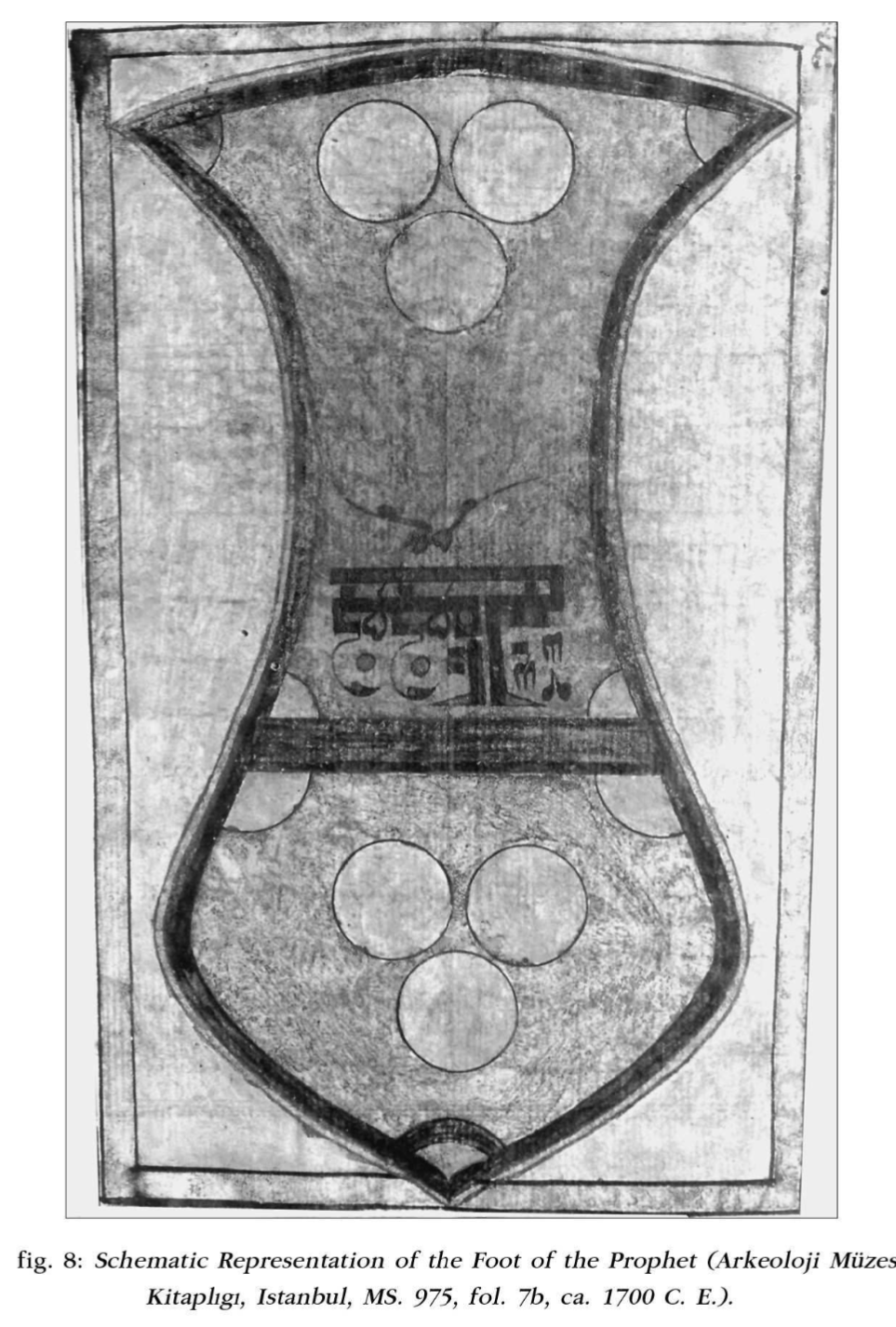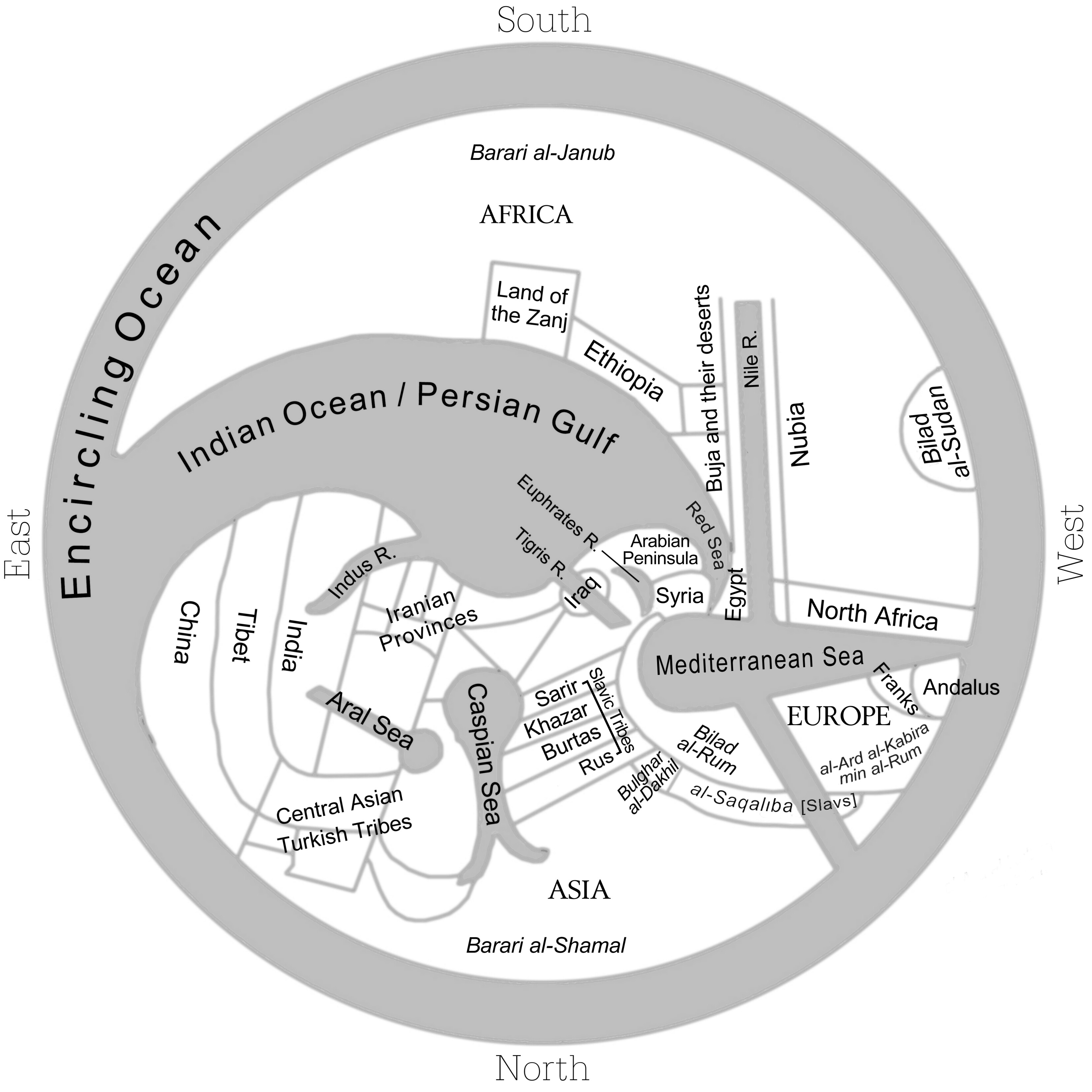Harmony Masks Conflict: The Mediterranean in the Medieval Islamic Imagination - Karen Pinto
Step 0 of 0
1

2

3

12th-century Islamic Map of the Mediterranean Belonging to Frederick II
Click on the the Show Dots button (image below) to find a guided tour through this map by Professor Karen Pinto.

After that, click on the Dot Story entitled "Ten Intriguing Aspects by Karen Pinto."
Academic Image Description:
This medieval Islamic representation of the Mediterranean is classified as a late 12th century work of medieval Sicilian provenance. It is from an Arabic geographical manuscript titled Kitab al-masalik wa-al-mamalik ascribed to Abu ‘Abbas Ahmad ibn Ibrahim al-Istakhri al-Farisi [sic]. The colophon of the manuscript provides a firm date of Rabi‘ I 589 A.H. (April 1193 C.E.) This manuscript is housed in Leiden at the Bibliotheek der Rijkuniversiteit, Cod. Or. 3101. The map is located on folio 33a.
This map stands out as one of the best examples of a particular iconographic form that emerged as the hallmark of medieval Islamic representations of the Mediterranean. It is a highly stylized geometric form with a bulbous base and a narrow neck that portrays both sides of the Mediterranean as perfect mirror images of each other. In addition, the three large circles in the center, markers for the islands of Cyprus, Crete, and Sicily, capped off by a large triangle adorned with inverted crescents, form a prominent vertical axis in the image. The map-maker is suggesting that these islands are crucial stepping stones of the Mediterranean; conversely s/he may have been trying to use them to indicate a major division between the northern and southern portions of the sea with the islands serving as the ultimate barrier between the Christian and Muslim sides. The strange, triangular, mythical island, which heads up the other known islands, is enigmatically labeled Jabal al-Qilal (Mountain of Qilal). This island appears to act as a cap to the Mediterranean. Its inverted crescent markings give the impression of a formidable barrier beyond which the sailor should not venture. It is tempting to read into this mythical island a muslim symbol for the Pillars of Hercules – the Pillars beyond which it was said only death and danger lay.
The horizontal axis with the large semi-circular gulf containing the islands of Dumyat and Tinnis, on the left-hand side of the image, versus the rectangular inlet of the Bosphorus, on the opposite side, unbalances the symmetry of the image. It is as if the cartographer is deliberately disrupting the rigid central vertical axis of the image to suggest contrarily that the northern and southern flanks of the Mediterranean are in fact not perfect mirror images of each other. This opens up the reading of the map to suggest that differences unbalance the image or that the differences actually provide an alternate point of connectivity across the Mediterranean. The interpretation of the latter is dependent upon the interpretation of the central vertical axis. If the central vertical axis serves to provide a unifying seam across the sea then the horizontal axis serves to disrupt it. If, on the other hand, the central vertical axis is meant to be read as a rigid boundary dividing the sea into two equal halves then the horizontal axis could be read as either an unbalancing of the sea to the Muslim side or as a node of communication between the primary Muslim and Christian powers of the region: Byzantium and Egypt.
The gaze of the cartographer/viewer moves along the central vertical island-axis: from the heart of the Islamic world in the East at the base of the map, looking out towards the West, to the top of the map and the mouth of the Mediterranean, which opens out into the Encircling Ocean.
Leiden Mediterranean Map - Translated
Place a DOT on the image





